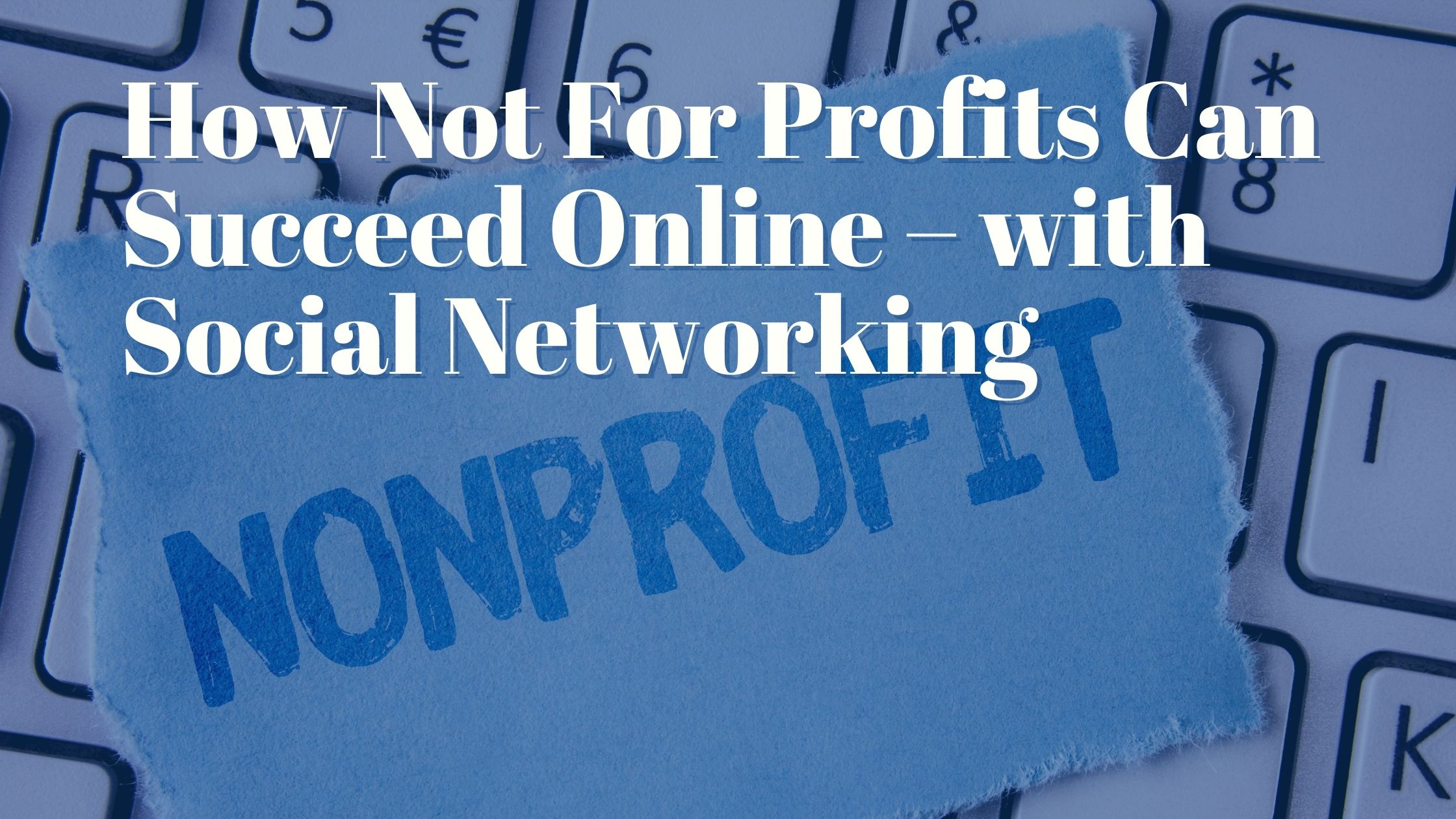Concerned about how your not for profit can succeed online? Get on social networks. Social Networking has become extremely popular for one primary reason… People want to connect. Social networking sites have given people the ability to exchange ideas and information with other like-minded individuals. They can gather in large or small groups and virtually brainstorm, network, share and gain insights. The question becomes, how do you harness this activity to benefit your organization?
Connect Your Not for Profit on Social Media
When you join a social network, create a profile – but don’t just stop there. Start a group or join other existing groups. Sites like Facebook have groups – these groups give people who have a common interest a place to enter into discussions, share links, videos, and photos and even promote new ideas. Finding a group of people who would be interested in your cause is a simple matter of searching. Let’s say you are looking for a group of people who are interested in helping victims of domestic violence, do a search on domestic violence and check out the groups that come up. Try these searches: Museums, Animal Safety, Diabetes. If a group doesn’t exist that suits your needs… start one!
Check out Impact Awards. The Impact Rewards honor organizations that work to create a positive difference in the world. It may not win your donation dollars, but it will go a long way to creating trust and recognition in the online community. The only thing you are required to do is set up a page for your organization and share your message.
Interact with the people you connect with on a regular basis. Set aside a fixed amount of time on a daily or weekly basis to log in, check out your profile, and share with others. This is about building relationships. I doubt that you would walk up to a stranger on the street and ask for support or money. The same holds true for your online connections. Let people get to know you and your organization and the trust will come.
Set your organization up to receive donations:
This may seem obvious, but in fact, many Not for Profits don’t do this. Both Facebook and other social networks have charity contribution widgets. Facebook has Causes. However, I should note that statistically, the donation amount is smaller ($10 or so) but it is from more people. This is known as the Long Tail of Fundraising. You get your message out – it reaches more people who give less but it spreads out (like a tail) over a longer period of time. In addition, eBay has Ebay Giving Works which allows people who are already auctioning items to donate a % to your organization. Smaller sites like Network for Good focus on gathering people who are looking to incorporate philanthropy into their lives.
Post Your Events and Invite Connections:
Facebook has public calendars for you to advertise your events on. Google has one as well. The advantage is the calendars get indexed in the search engines – just one more way for people to find your web site.
Share and don’t forget your web site:
All roads lead to Rome. In everything you do your main goal is to get people back to your website.
Set up a blog on your website and link it to your Facebook, LinkedIn, Twitter, and Google accounts. This allows you to work once and spread the word in multiple places. There are automated software programs such as twitterfeed (www.twitterfeed.com) that send your post to Twitter. You can set up your Facebook account to have the status automatically update with your Twitter account. In addition, you can use the Blog Networks or Blog RSS Feeder Applications to automatically import blog posts into your Facebook profile. I also use Hootsuite to blast out announcements to my Twitter, Facebook, Instagram, and LinkedIn status lines.
Let’s assume you have 100 friends on LinkedIn or Facebook. You send your message out to those 100 people. Those 100 people then send it to their friends, say another 1000 people. Those are 1000 people that you would have not been able to otherwise reach. That is what Social Networking is about. It will take an investment of time and energy to have it pay off, but it will pay off.
Keep Your Eye on the Conversation:
With the rewards comes some risk:
Reputation Management: Once you unleash the social networking beast, it can be hard to rein in. You have to keep on top of what is being said about your organization. Setting up news and blog alerts in Google and Yahoo is a very smart idea (http://www.google.com/alerts http://alerts.yahoo.com/). You can track what is being said on Twitter through Twitter monitoring tools such as Twitter scoop ( http://www.twitscoop.com/) and other software available online
Not all bad press is bad. If something is constructively critical of your organization, you have an opportunity to correct it. You can rebut or make right the complaint without hiding it and actually win the trust of those “watching”.
Message Dilution: An organization’s message and purpose can get diluted in the Social Networking arena. I akin this phenomenon to playing telephone – when the message passes through many mouths and ears, it can be altered. The reality is, on the web, people are having conversations without the organization or corporation being involved. This means that you will not always have control over what is being said – and you know what, that’s ok. Releasing some of the control is not necessarily a bad thing.
More ways to Share Your Stories:
Itunes can be used the same way as blogs for Podcasts and YouTube and Google Video for Video Feeds (all free).
To determine which social network to put your energy in – take a look at some of the demographics:

 Some examples of good Social Networking use for Not For Profits:
Some examples of good Social Networking use for Not For Profits:
Shelterbox Fan Page on Facebook: https://facebook.com/ShelterBox
Check out this well-done video by Rotary International
Want help? Contact us!

